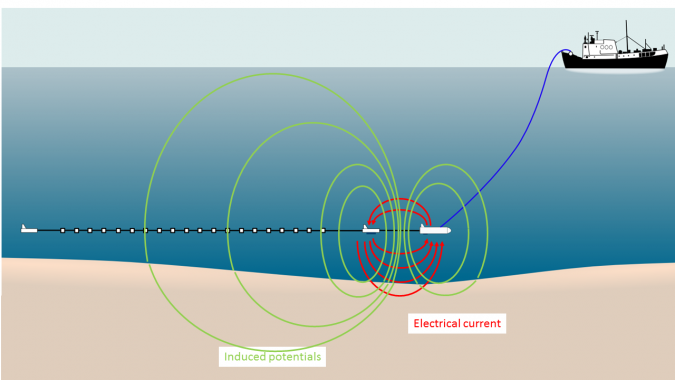There is nothing worse in any project than finding wrecks or unexploded ordnance (UXO) after construction has started, writes Huibert-Jan Lekkerkerk in his article ‘Sub-bottom Object Detection’. When a new port is being constructed, UXO risk mitigation project teams in Europe often find WWII era bombs on the site. Fortunately, there are a number of sub-bottom measurement techniques that can be deployed to gather the required sub-bottom information to avoid serious hiccups. The article by Lekkerkerk provides a concise overview of the various types of system available. He zooms in on some interesting innovations in this field over the past years.
In another article, Torsten Frey, a researcher at Leipzig University, and Clemens Kircher, a project manager at Boskalis Hirdes, note that the limitations of available technologies make the technical UXO survey a particularly intricate task. Both experts state that munitions in the sea pose a risk to the sustainable development of the ocean economy. In particular, they are a global challenge during the construction of wind farms, pipelines and other infrastructure. To ensure high-quality performance during the execution of the necessary maritime munitions detection and clearance operations, industry experts and scientists from Germany have defined a set of requirements that are described in the article ‘Submerged Munitions, No Hazard Left Undetected’.
In one of the world’s largest ports, Rotterdam, no bombs from WWII have been found for over 30 years. Three decades may seem a long time, but 75 years after the war came to its end, bombs from that time are still being searched for with the utmost care. In 2019, a new ‘bomb map’ was released, showing the situation even more accurately. The new map of the municipality of Rotterdam shows all possible unexploded explosives – airplane bombs and ammunition – from WWII. According to the bomb map, there is an increased chance of the presence of duds at about 230 places in Rotterdam soil.
If today or in the future a new port area is developed in Rotterdam, the bomb map will be the guiding principle. If it turns out that the area where the port is to be located is suspicious, it must be surveyed. That is problematic, because it is expensive and therefore frustrates the business case. Although nothing is usually found, the work is definitely not in vain, as it provides 100% certainty that the area is completely safe. Another risky place less, based on extremely reliable facts!


